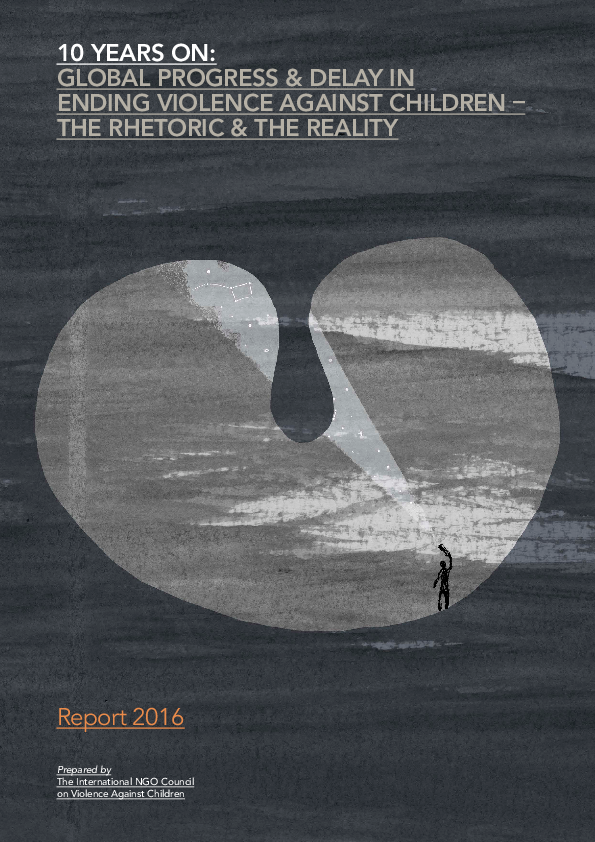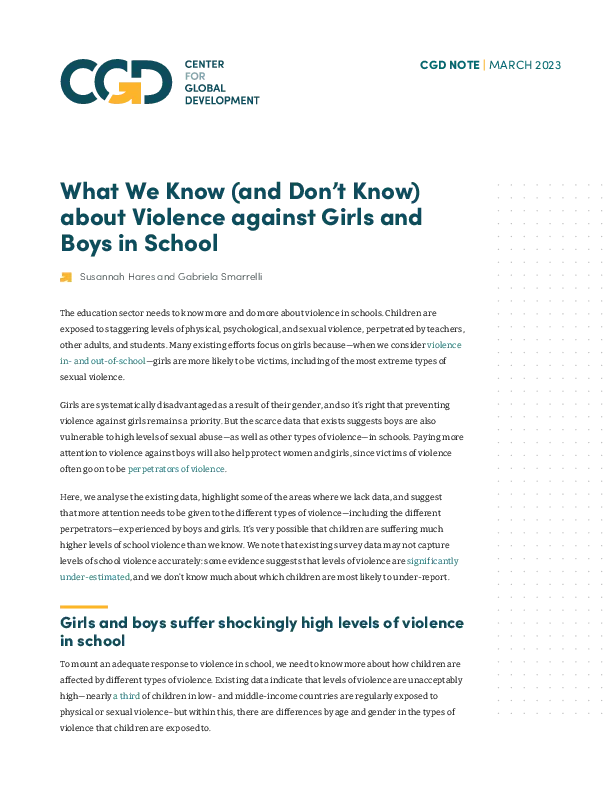
Reports, Study: Research
10 Years On: Global Progress & Delay in Ending Violence Against Children – The Rhetoric & The Reality
Publication year:
2016
English
Format:
pdf (3.0 MiB)
Publisher:
The International NGO Council on Violence against Children
This report, Global progress & delay in ending violence against children, tracks ten years of change since the first UN Study on Violence Against Children was published in 2006. The study includes contributions from the UN’s Deputy High Commissioner for Human Rights, Kate Gilmore, the original study’s main author and current Chairperson of the UN Commission of Inquiry on Syria, Paulo Sérgio Pinheiro, and several Special Representatives of the Secretary-General who deal with children’s rights.
As well as physical punishment, execution and infanticide the report covers gang violence, child marriage and female genital mutilation in its examination of violence against children. Data included in the report shows that while the prevalence of many forms of violence has fallen the world’s increasing population has led to more children experiencing violence overall.
The UN’s first violence study set 2009 as a deadline to legally prohibit many of these harmful practices, but there is still much to be done before these goals are met in reality. Despite the seemingly slow progress to date the Sustainable Development Goals have set the target of ending all violence against children by 2030, a global partnership has been formed to fulfil this goal and the UN is soon to launch a global study on children deprived of liberty, representing an unprecedented level of support for ending violence against children.
In the ten years since the Study was published, great strides have been made in learning about the violence that affects children around the world, along with great advances in combating some of those forms of violence. Yet for many children, violence is an ever present fact of life.
The report itself was prepared by the International NGO Council on Violence Against Children, a group of leading international and national children’s rights organisations formed in 2007 and tasked with following up on the recommendations of the original study.
Read full abstract
View & Download
Document information
Format
Content type
Rights
© Author/Publisher
Found a mistake? Help us improve!
If you have noticed a document assigned to the wrong author or any other inaccuracies, let us know! Your feedback helps us keep our data accurate and useful for everyone.
Share
Link


